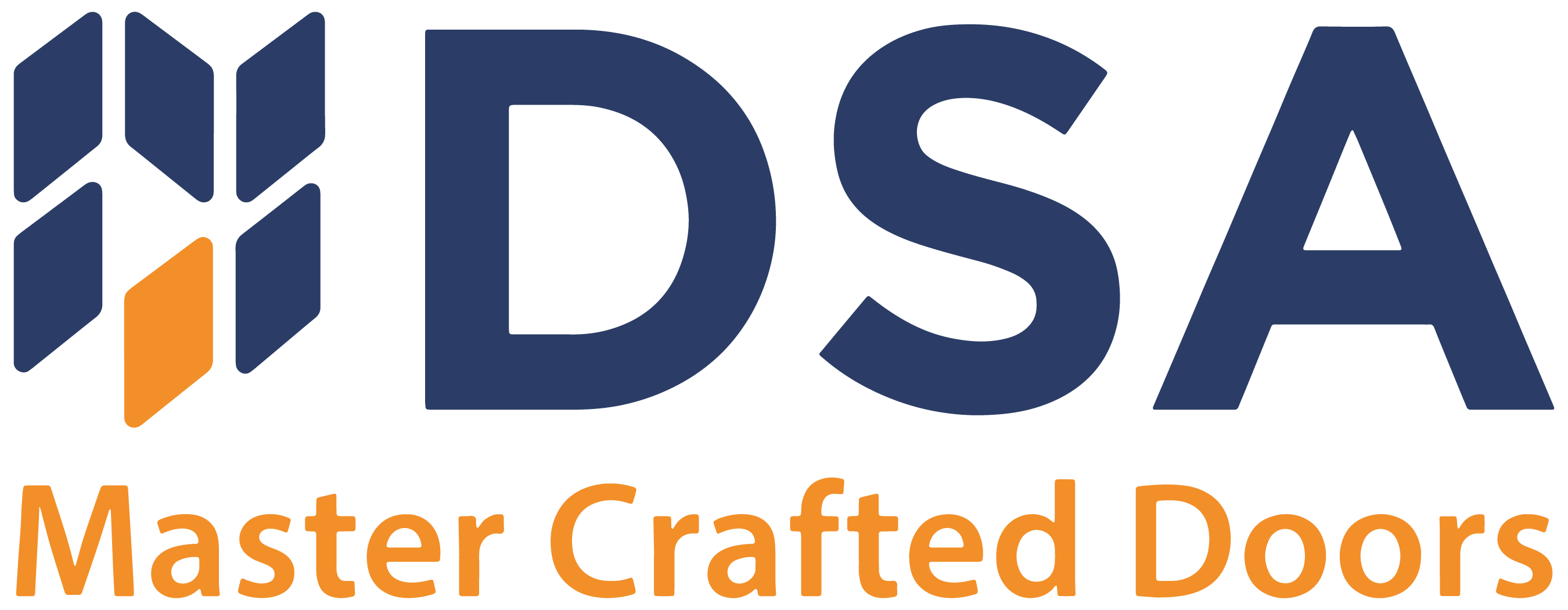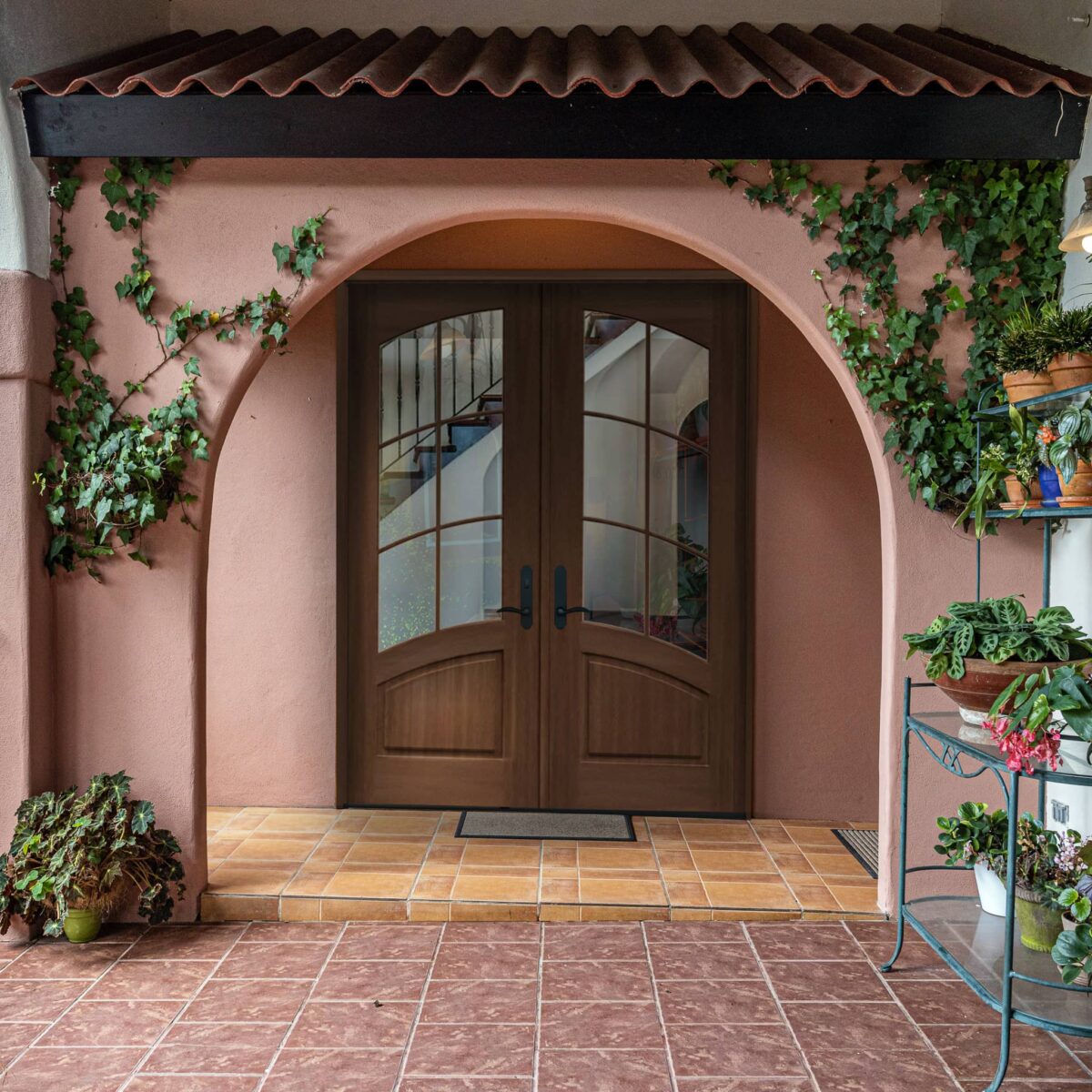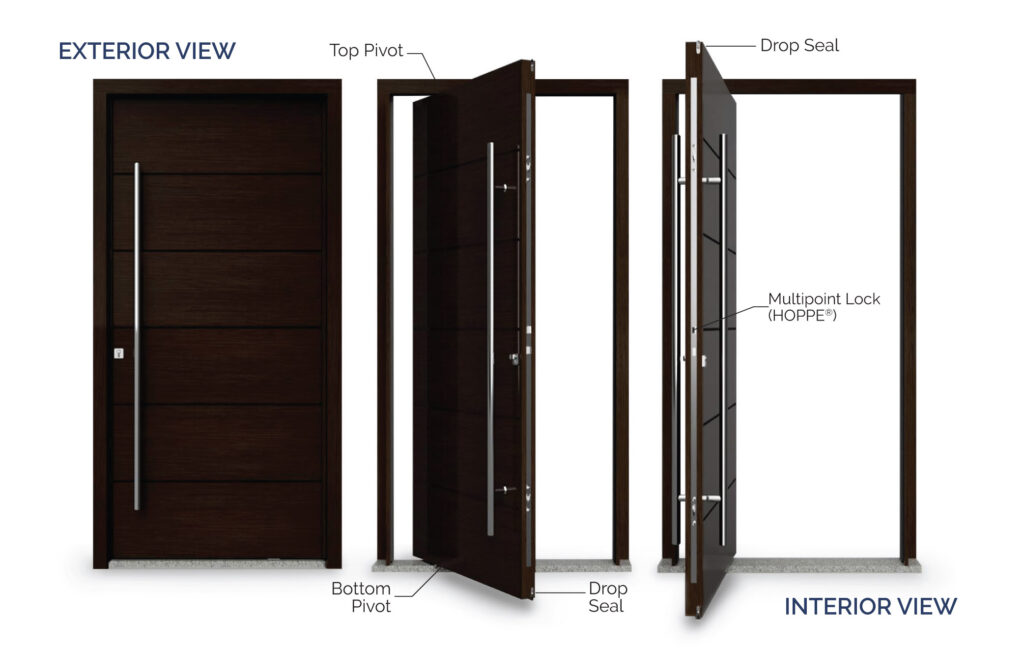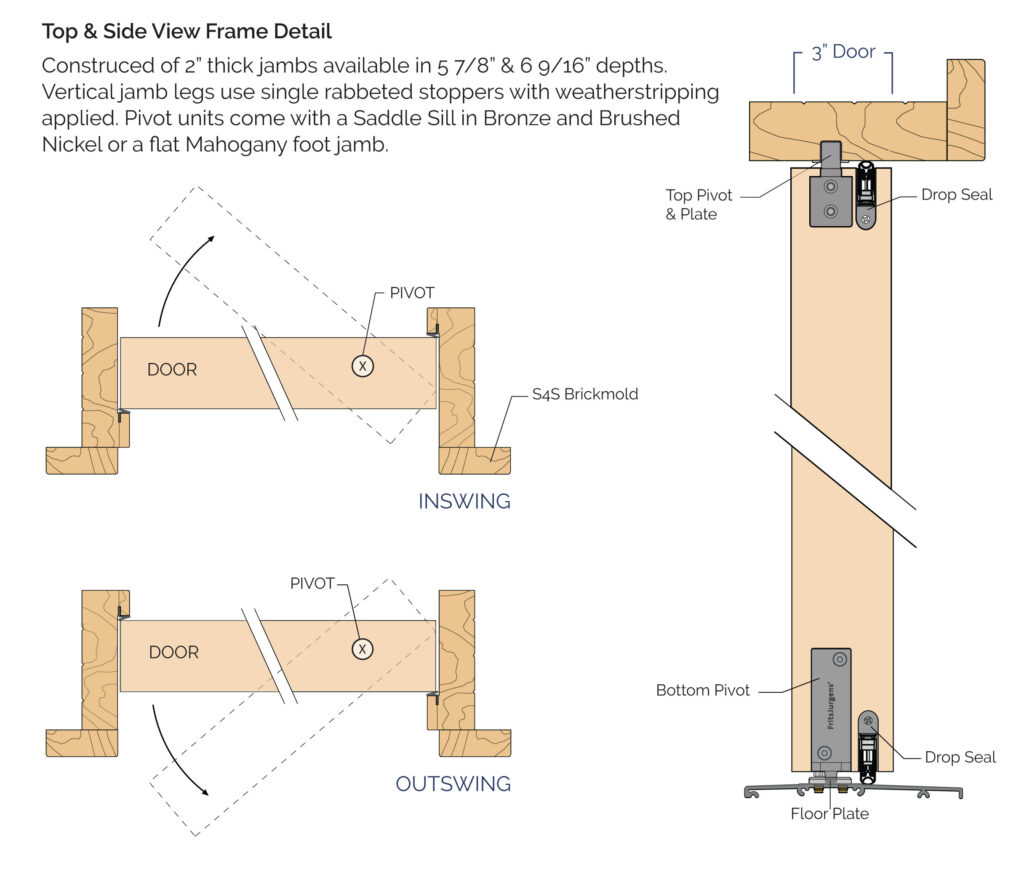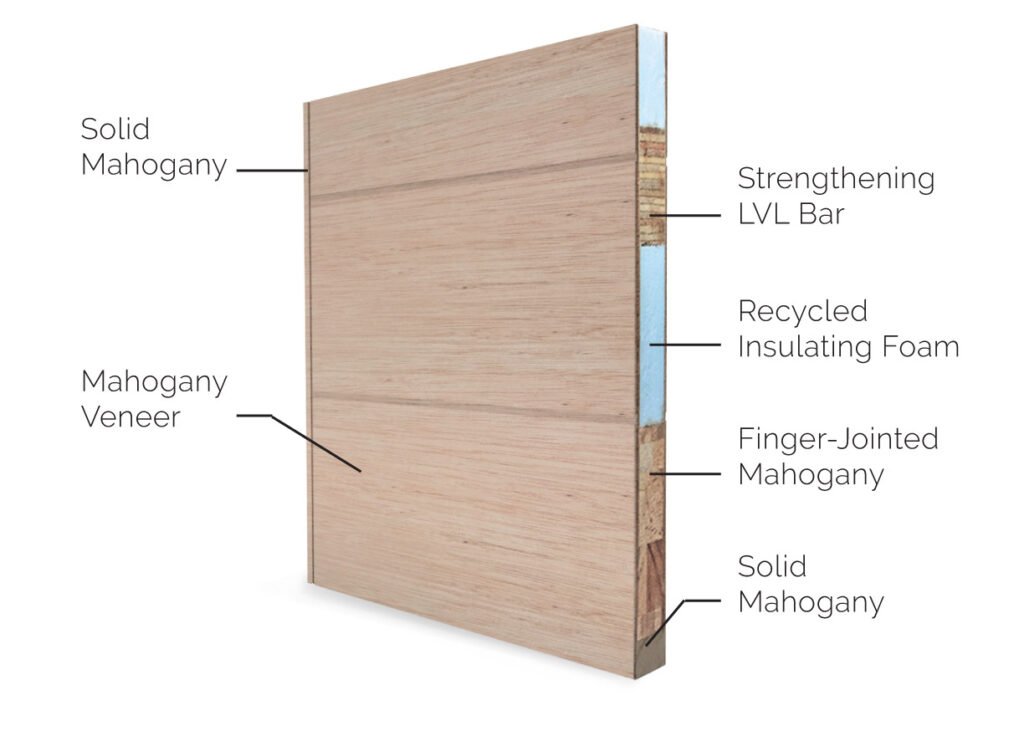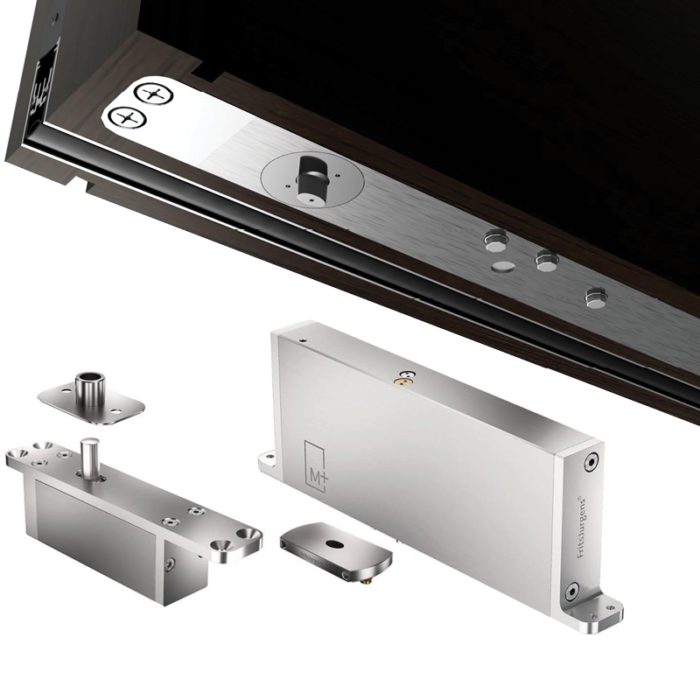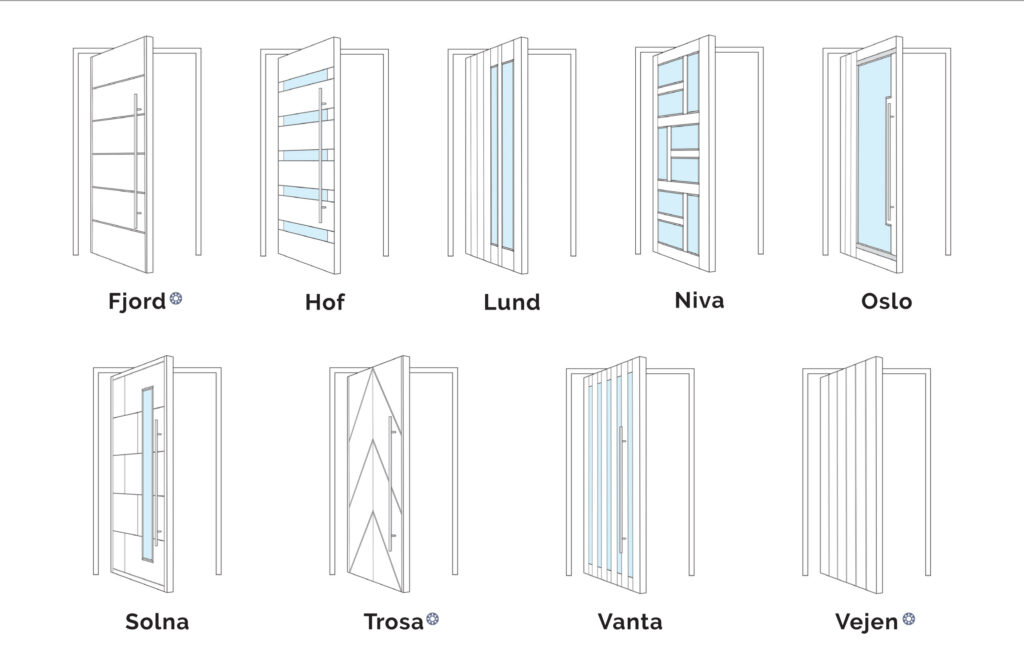Fiberglass Doors vs. Wood Doors: The Ultimate Guide for Builders and Buyers
Which is better for a front door, fiberglass or wood? When it comes to choosing a door for your home’s entryway, the material you select can make a significant difference. Remember, doors serve a number of purposes. They provide security, they help keep your home insulated, and they also provide a huge aesthetic appeal.
Many builders prefer classic front doors made of heavy wood. However, natural wood doors can be costly. In many cases, a fiberglass front door can be an acceptable alternative. But which is truly better? In order to answer that question, we need to take a much closer look.
In this article, the experts from DSA Doors will compare fiberglass doors vs. wood doors, examining their respective pros and cons so you can make an informed decision.
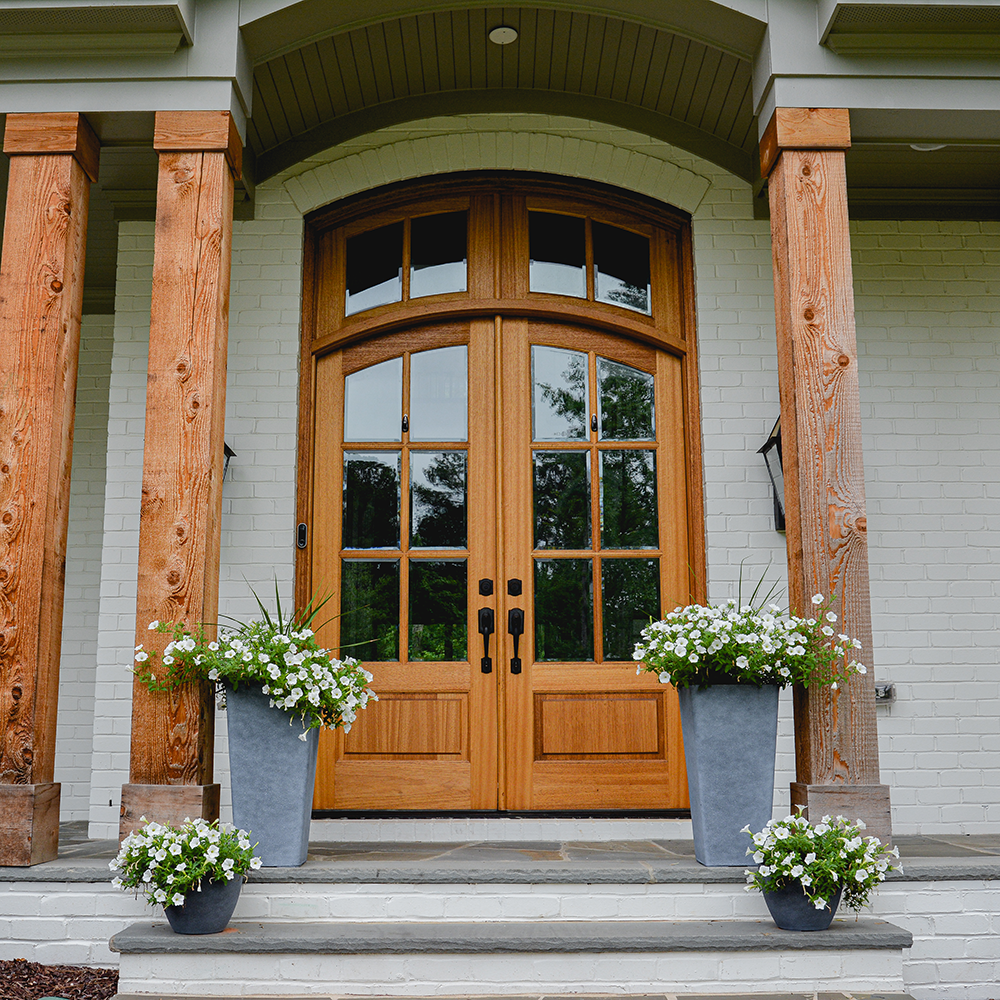
Wood Doors and Fiberglass Doors: What Are You Looking For in a Door?
Is wood or fiberglass better for a front door? Both buyers and builders want to know. And despite the simplicity of the question, there are lots of factors to consider. According to Guillermo Flores, Director of Product Development for DSA Doors, builders should ask themselves some important questions before deciding on a fiberglass or wood door model.
“Are you more concerned with aesthetics or energy efficiency? Is security a concern? Where is the home located? Is security or environmental wear and tear going to be a problem?” Flores says. “There’s a lot more to it than just choosing A or B.”
To Guillermo’s point, let’s analyze what else you should consider when determining the best material for an entry door.
Energy Efficiency
Energy-efficient doors help maintain a comfortable indoor temperature while reducing energy costs. If the home is in a particularly hot or cold climate, you may need to run your air conditioning or heat more often. In this case, the type of door you choose can make a big difference.
DSA’s Wynstellar Collection maximizes energy efficiency with Cross Laminated Ply Foam cores. All DSA Doors also feature energy-efficient Low-Emissivity glass, which absorbs infrared radiation to prevent heat from escaping through the glass and can reduce energy costs by up to 30%.
Eco-Friendliness
Many modern builders and homebuyers like to know the environmental impact of the materials used in a door’s construction. While this may not be priority #1, it is certainly something to consider when determining which type of door is right for you. DSA Doors are constructed with single-origin timber, sustainably sourced from an FSC-certified forest.
Safety and Security
All exterior doors should provide adequate security to protect the occupant’s family and property. However, some types of door materials perform better in this role than others. On top of that, maintenance can also be a factor in how well a door stands up to intruders.
Durability
Nobody wants to be replacing their front door every other year. Whether you choose a wood or fiberglass front door, it should be able to withstand common adverse weather conditions as well as daily wear and tear. The longer it can last, the better!
Required Maintenance
It’s crucial to consider the amount of maintenance required to keep a door in optimal condition. Some people don’t mind doing a little upkeep now and then, while others will want a door they don’t have to think about unless they’re using it.
Cost
The price tags between fiberglass and wood doors can vary quite a bit, but the same goes for different types and styles within those categories. Whether you’re building or renovating, you should make sure to calculate all the upfront and long-term costs associated with the door’s installation and maintenance.
Ken Custer, Vice President at DSA Doors, has answered the “fiberglass vs. wood front door” question for hundreds of clients. “There are pros and cons to both types of doors,” he says. “The key is figuring out which benefits are most important to your project while minimizing the effect of those downsides.”
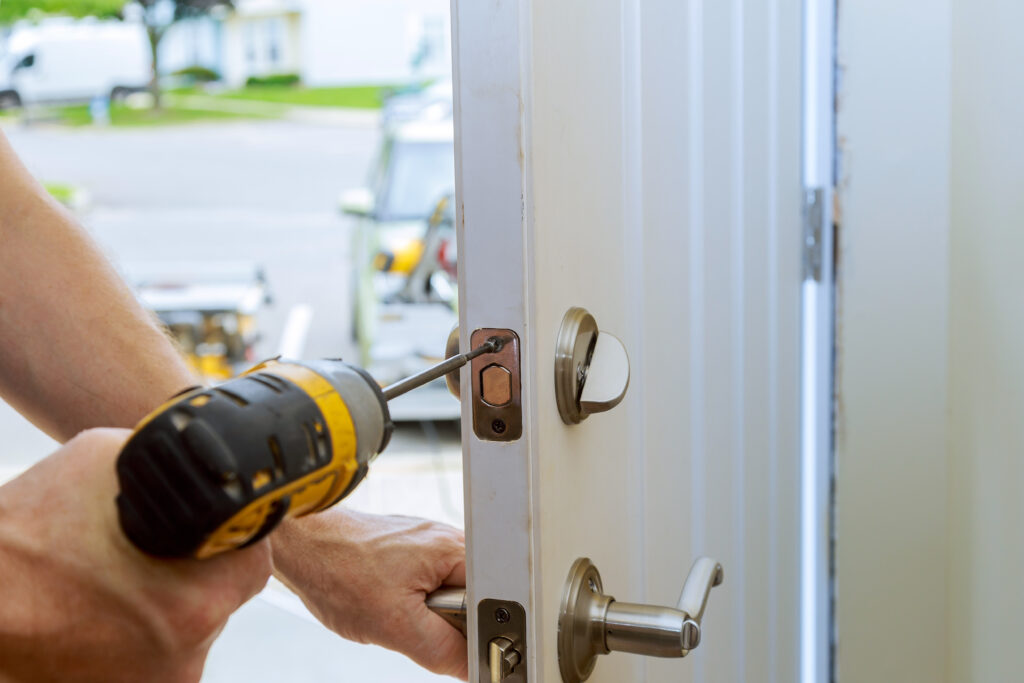
The Downsides of Fiberglass Entry Doors
Fiberglass exterior doors first appeared on the construction scene in the early 1980s. They typically consist of a wood or composite frame and a door panel made of fiberglass-reinforced sheeting held together with resins. The goal in creating this new type of door was to provide durability, energy efficiency, and aesthetic appeal while reducing overall costs.
That’s all well and good, but fiberglass doors do have some drawbacks to consider.
CON: Fiberglass Doors are Difficult to Work or Trim
Fiberglass doors are mass-produced, which is what helps keep them so cheap. As a result, they often come in standardized sizes. This can be frustrating for builders or remodelers who have (or want to design) a non-standard entryway. The materials used during prefabrication also make it very difficult to trim these doors in the event of a poor fit.
With DSA Doors, custom sizes are a non-issue. In addition to our Custom department, which creates wood doors of any size, our premium wood doors can be trimmed. Trim amounts vary depending on door size and style, but many DSA Doors can be trimmed up to 3 inches in height and 1/4 inch in width.
CON: Fiberglass Doors are Getting Pricier
The cost of fiberglass doors has increased due to the rising demand and manufacturing costs. In fact, some fiberglass models are now outpricing natural wood doors in some markets, reducing their primary benefit.
CON: Fiberglass Doors Are Far From Eco-Friendly
The production of fiberglass doors is energy-intensive and involves the use of tons of chemicals. The resins and epoxies that hold the doors together are extremely toxic, so fiberglass doors are not easily recyclable or biodegradable.
“We have clients contact us every day because they’re dissatisfied with their fiberglass door performance,” says DSA Manufacturing Engineer Brent Shepherd. “In a lot of cases, they just want something that’s easier to work with and provides a more solid, premium feel.”
Weighing wood entry doors vs. fiberglass? Check out DSA Doors’ full catalog of models, including Traditional Doors, Modern Doors, Coastal Doors, and more.
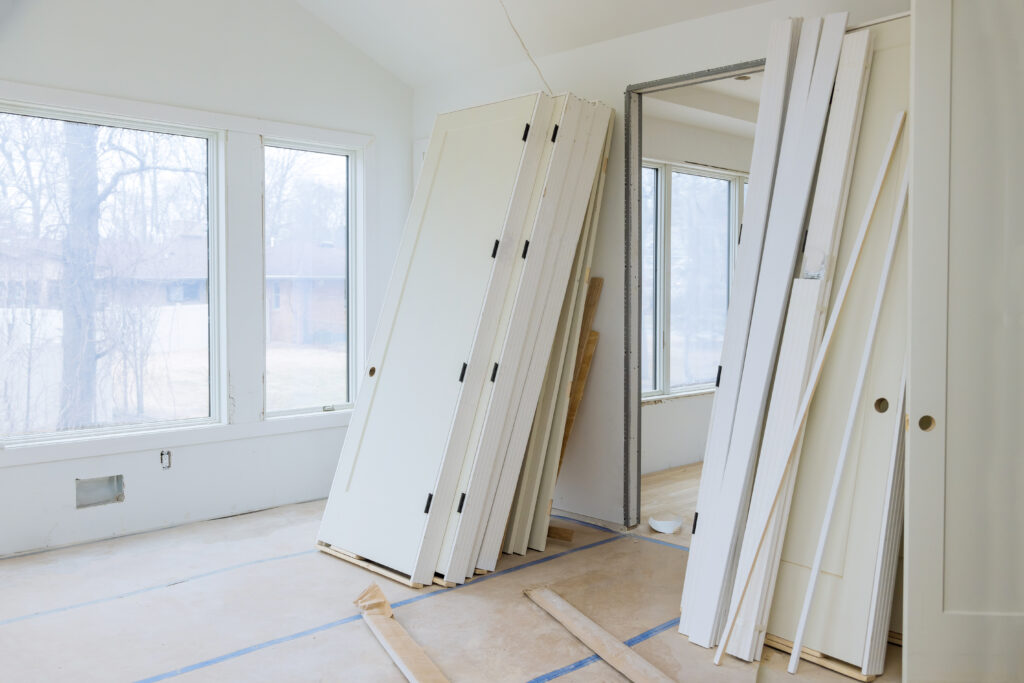
The Benefits of Fiberglass Entry Doors
Despite these limitations, fiberglass doors offer several advantages. After all, there’s a reason why these doors are in demand. It’s also important to be fair when considering the difference between fiberglass and wood doors because the decision often comes down to preference.
PRO: Fiberglass Doors Require Little Maintenance
Builders and buyers choose fiberglass doors because they are resistant to rot, warping, and rust. This means they are generally quite low maintenance. In fact, cleaning fiberglass doors typically involves just mild soap and water. However, innovations to wood doors exist for low-maintenance entries. DSA’s Wynstellar Collection, constructed with Acetylated Accoya, is also resistant to rot, warping, moisture, insects, sunlight, fire, mold, mildew, and rust.
PRO: Fiberglass Doors are Still Cheaper than Wood
While they may have a higher upfront cost than some entry doors, fiberglass doors offer long-term cost savings due to their durability and energy efficiency. This is a big reason why they’re so often seen in apartments and office buildings that have dozens (or hundreds) of doors.
PRO: Fiberglass Doors are Getting Better at Mimicking Wood
The early fiberglass doors looked pretty terrible. However, newer models are actually good at mimicking the look of natural wood doors. So even though they lack the same wood door benefits, builders can select from a variety of design options to suit various architectural styles.
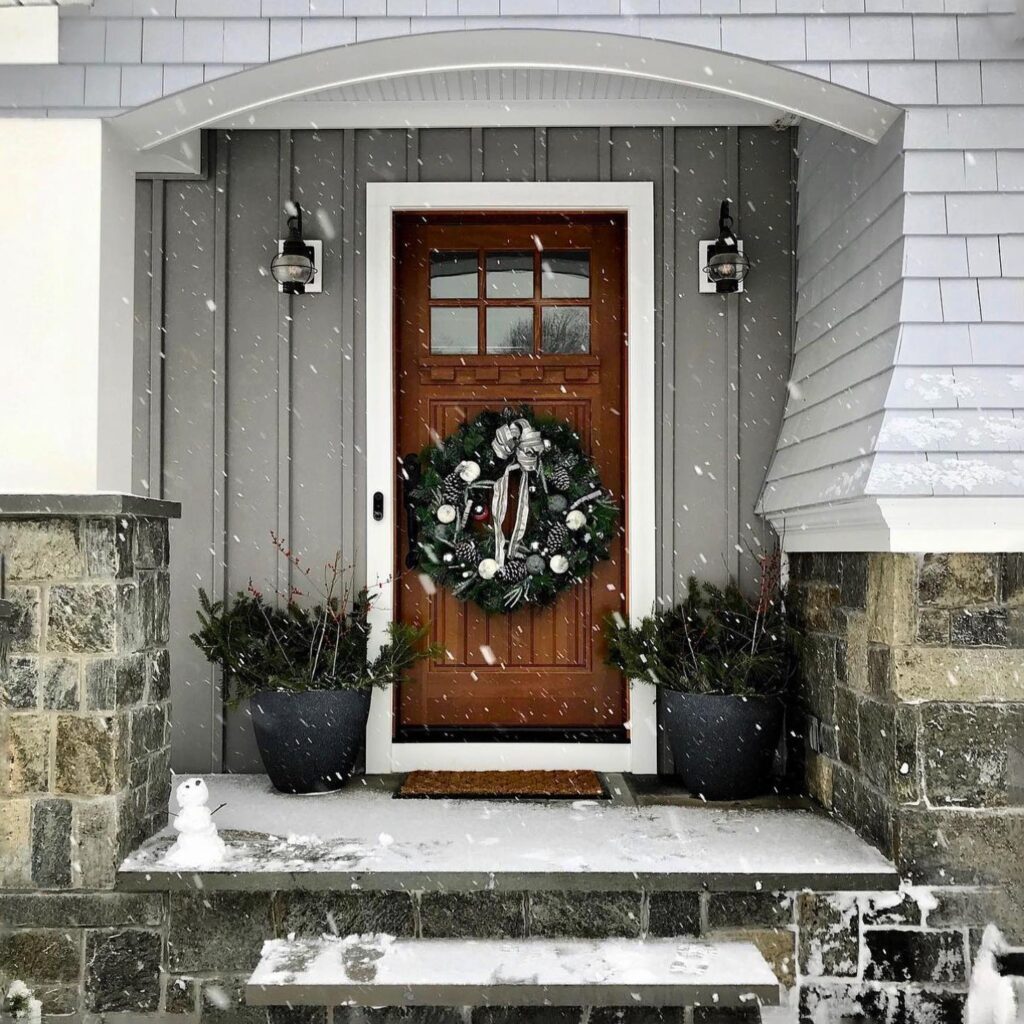
The Downsides of Wood Entry Doors
Wood entry doors are about as old as the concept of doors themselves. Buyers and builders love them for their classic and timeless appeal as well as their natural beauty. Because they are made of natural oak, mahogany, cherry, etc., each model is 100% unique in terms of grain pattern, color, and texture. But classic as they may be, homeowners need to consider their investment when choosing a wood door.
“Whenever you’re working with a natural element like wood, you have to expect limitations,” Flores says. “However, if you treat and maintain your wood door properly, you can drastically reduce those downsides over the life of your door.”
CON: Wood Doors Are A Bigger Investment
Every builder knows that you get what you pay for. The cost of a door can vary depending on a number of factors, including size, style, material, and quality. However, in general, wood doors are more expensive than fiberglass doors due to the craftsmanship involved.
CON: Wood Doors Require Maintainance
Wood doors are a beautiful and natural addition to any home, but they do require some maintenance to keep them looking their best. When improperly maintained, wood doors can become compromised and even warp or crack. In order to keep a wood door looking its best for years to come, it needs to be periodically sealed or painted to prevent moisture absorption and UV damage.
CON: Many Wood Doors Require an Overhang
Traditional wood doors require an overhang to protect them from the elements. This is because wood is a natural material that can be susceptible to damage if it is constantly exposed to direct sunlight and precipitation. Protective overhang dimensions should be at least half the distance from the unit threshold to the overhang ceiling.
DSA Doors does offer a selection of wood doors that do not require an overhang. Our high-performance Wynstellar Collection is constructed with Acetylated Accoya and features a five-year warranty.
DSA Doors provides wood doors of superior craftsmanship and quality. Not only do we have hundreds of door styles to choose from, but we can also create custom designs to suit any project.
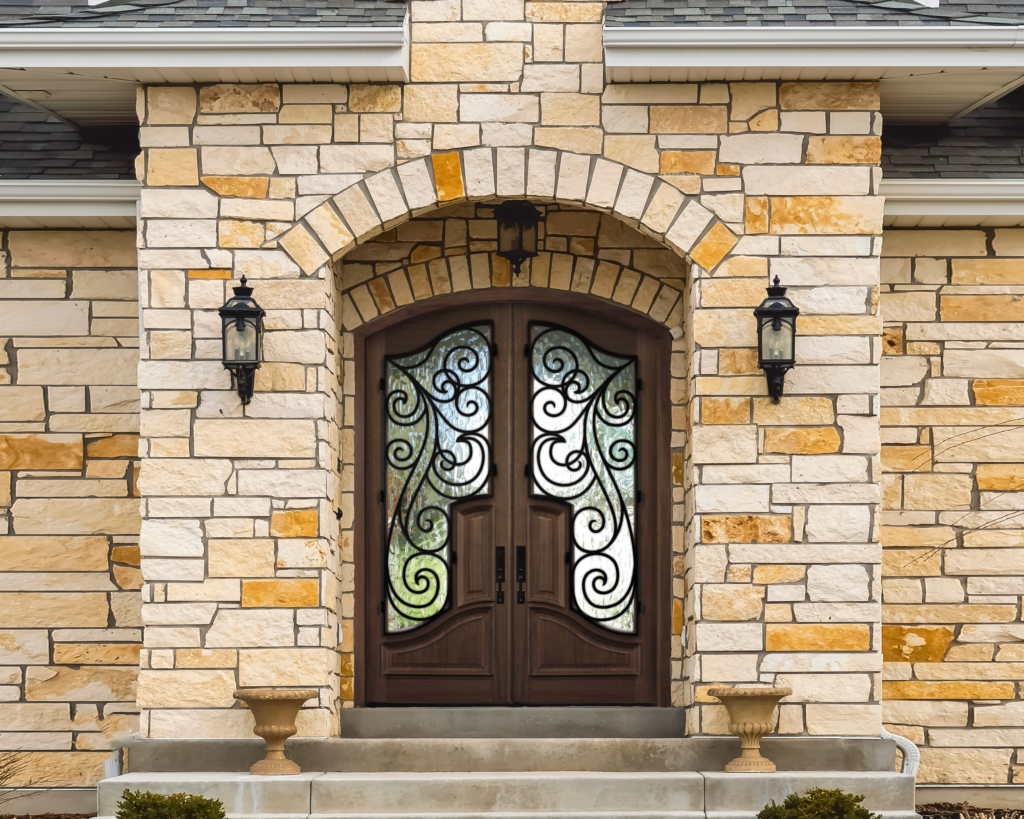
The Benefits of Wood Entry Doors
For many homes, wood doors offer numerous advantages that make them an attractive choice for designers, builders, and homeowners. There’s no substitute for the timeless beauty of wood and all the ways it can be customized to match individual style preferences.
PRO: Wood Doors are Sturdy and Solidly Made
Due to their dense composition, wood doors feel very sturdy – even when they’re made of lighter types of wood. Many homeowners report feeling far more secure with a solid wood front door as opposed to steel, fiberglass, etc. This is because wood doors are more difficult to break down, making them a more effective deterrent to burglars. Wood doors can also withstand a lot of use and abuse without showing signs of wear, making them a good choice for homes with high traffic.
PRO: Wood Doors are Beautiful, with Endless Design Possibilities
Wood door designs range between simple and incredibly ornate. And because they are completely customizable, they can be suited to virtually any style, whether you have traditional, modern, or rustic decor. Whenever a builder wants a “show stopper” exterior door, you can rest assured it will be made of wood.
PRO: Wood Doors are Easy to Work, Resize, and Come in Custom Sizes
Wood is a versatile material that can be easily modified to fit non-standard openings. This gives designers free rein to get as creative as they want to with their properties. Custom DSA Doors are a great option for non-standard entryways, and standard DSA Doors can be trimmed to accommodate slight differences common with remodels. Wood doors can also be painted or refinished by homeowners as desired. This makes them a good choice for homeowners who want to change the look of their door without having to replace it.
PRO: Wood Doors are Luxurious and Provide a Nice ROI
Wood doors are a luxurious and elegant choice for homeowners who want to make a statement. They are made from a natural material that is both beautiful and durable. Though they have that higher upfront cost, it’s important to note that wood doors provide a great return on investment. Studies have shown that homes with wood doors sell for more money than homes with other types of doors. Buyers see a good-looking wood door as a sign that the entire property is of higher-than-average quality. As the “face” of the house, the right front door can significantly impact the selling price.
PRO: Wood Doors are Eco-Friendly and Renewable
Wood is a sustainable and renewable resource, making it an environmentally friendly choice. Trees are a natural resource that can be replanted and harvested, so wood doors do not contribute to deforestation. In fact, wood doors can actually help to reduce deforestation by providing a market for sustainably-grown wood. In addition to being sustainable, wood is also a recyclable material. Old wood doors can be recycled into new products, such as tables, clocks, and even furniture. This helps to reduce waste and keep wood out of landfills.
PRO: Wood Doors are Reparable
Wood doors are a durable material that can last for many years with proper care. However, even the most durable doors can eventually suffer damage. If a wood door is damaged, it can usually be repaired or replaced without the need for a complete door replacement. Wood doors can be repaired by filling in cracks, sanding down dents, or replacing damaged panels. In the event of UV damage, wood doors can be sanded down and refinished to restore their original appearance by a homeowner or contractor.
“Is fiberglass OK for a front door? Sure. But there really is nothing quite like a well-made wood door,” says Brent Shepherd. “It’s a little piece of nature that can make even the most modern home design feel grounded.”
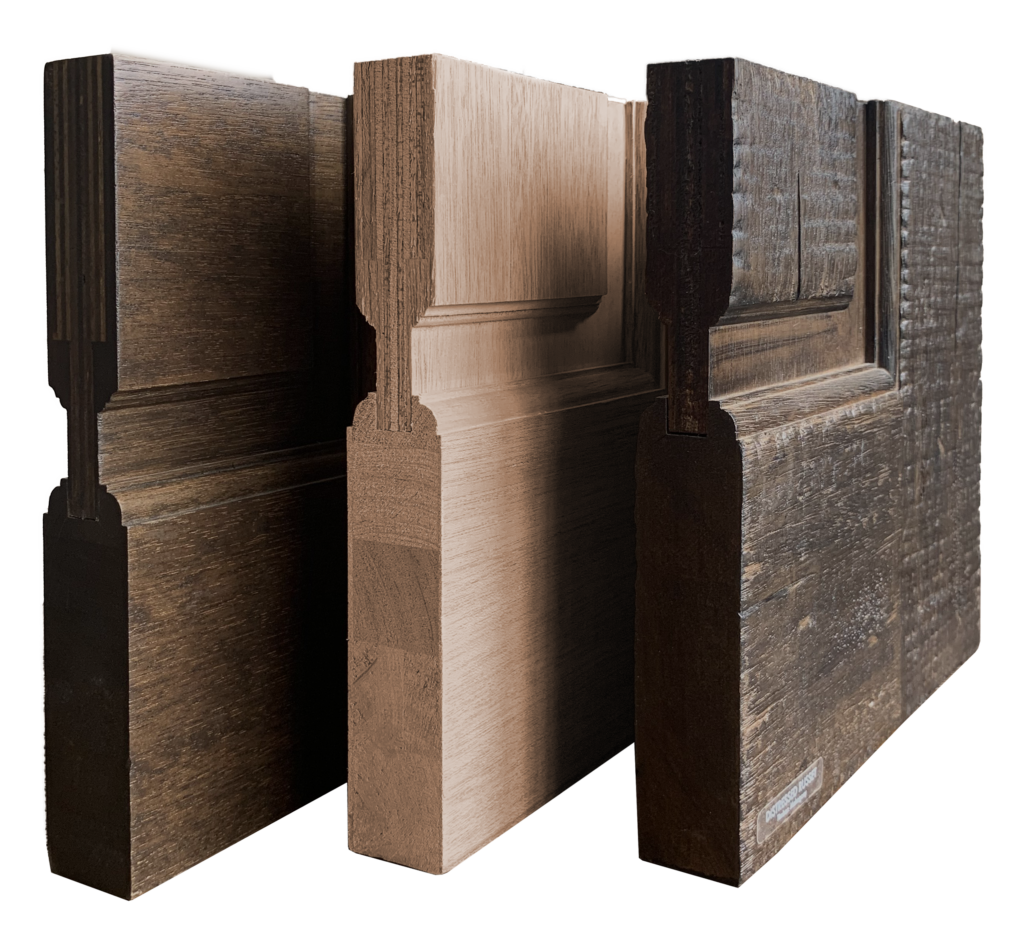
Fiberglass Doors vs. Wood Doors: Which is Better?
We’ve done our best to outline all the pros and cons of both materials here. However, the choice between fiberglass and wood doors ultimately depends on your priorities. Fiberglass doors offer the advantages of low maintenance and low investment. On the other hand, wood doors are eco-friendly, strong, durable, and provide unmatched elegance and design versatility.
What sort of property are you looking to create? What types of people will occupy or purchase it when you’re done? What’s the project’s budget? These are the sorts of questions you need to ask yourself when considering a wood or fiberglass door (or doors). The answers will go a long way toward pointing you in the right direction.
“If you’re a builder, you need to know your target market,” says Ken Custer. “Entryways not only contribute to curb appeal, but they’re every single person’s ‘introduction’ to the home. That includes the people who will eventually purchase your project. In the end, we’re all designing for them.”
DSA Doors Provides Superior Quality Natural Wood Doors
If you do determine that a wood door is the right choice for your project, the next thing you need to consider is where you’ll source the final model. At DSA Doors, we have more than two decades of experience producing some of the finest wood doors in the country. Not only do we have hundreds of door styles to choose from, but we can also create custom doors to suit even the most unique home or office space.
To see our full selection of signature, traditional, and modern doors, visit our website here. To see some of our custom features, click here.
DSA Doors offers a variety of pre-fabricated and custom wood pivot doors for sale. You can see our entire LUXE Pivot Door Catalog here
